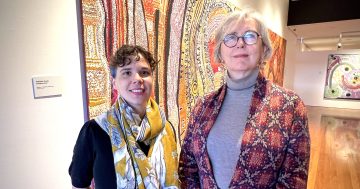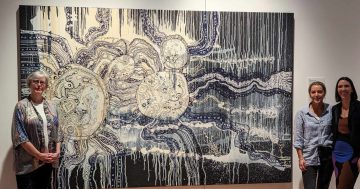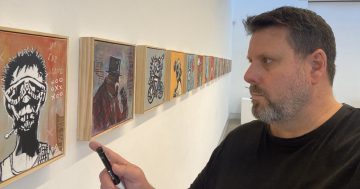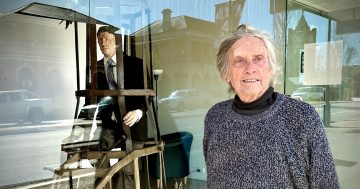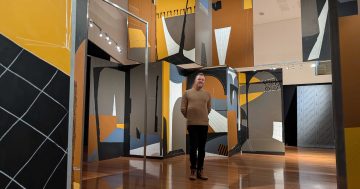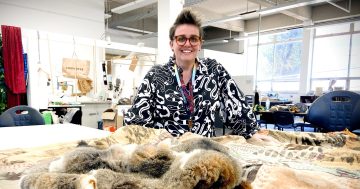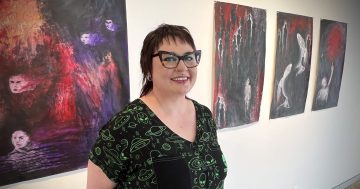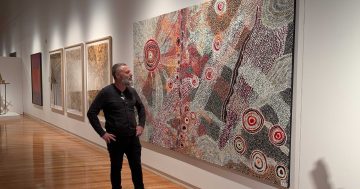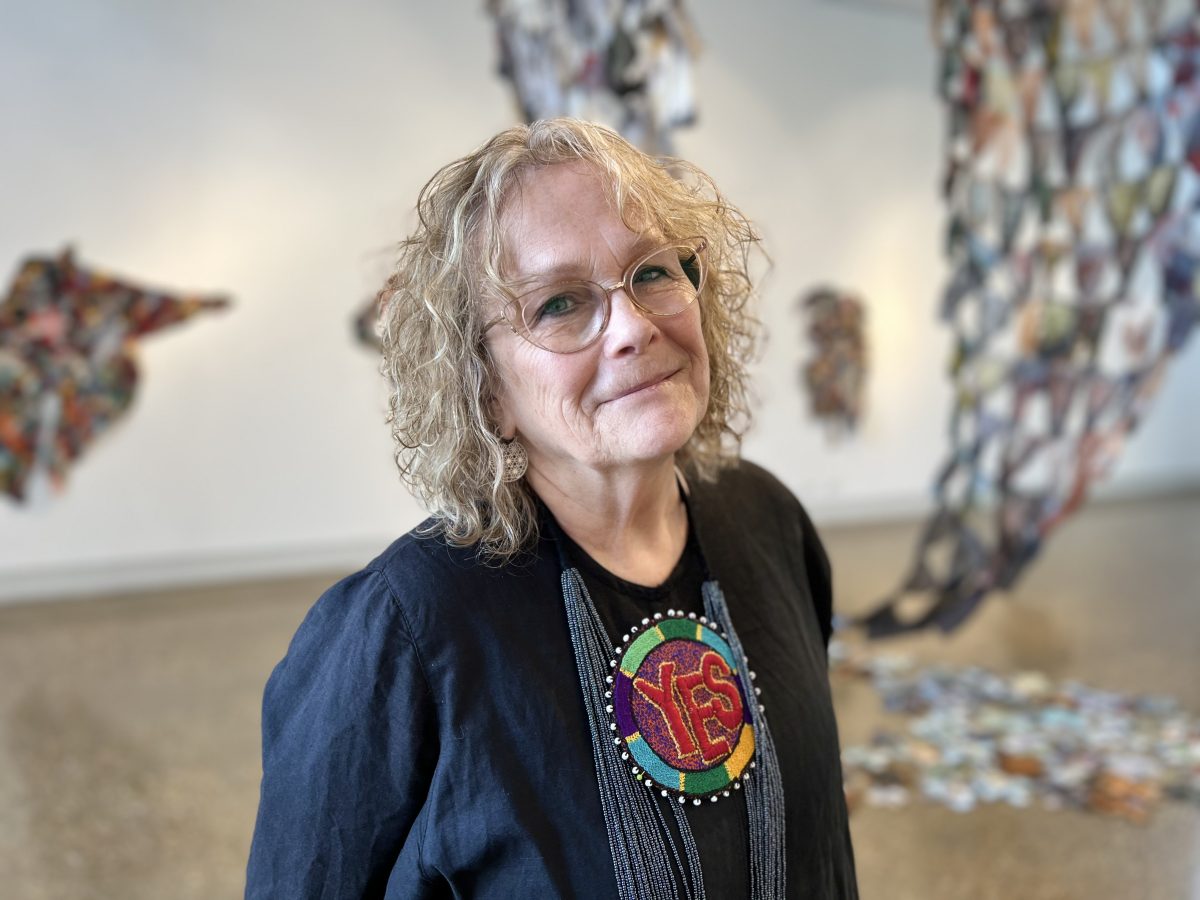
Textile artist Julie Montgarrett is showcasing snippets of a lifelong career in the arts. Photo: Chris Roe.
Acclaimed textile artist, teacher and academic Julie Montgarrett is looking back over 40 years of creativity with her new exhibition at Gallery 43 at the Wagga Wagga TAFE.
“When I was asked to exhibit something, I thought it was an interesting opportunity to revisit a whole lot of work that I’ve done in the past,” Julie explained.
“So, what you’re looking at is a collection of parts of all sorts of previous exhibitions going back to 1985.”
Through a mix of embroidery, drawing and collage, Julie’s work involves complex installations that weave visual narratives from textiles and explore the fragility of Australian histories and environments.
She has been involved in more than 100 exhibitions in Australia and abroad.
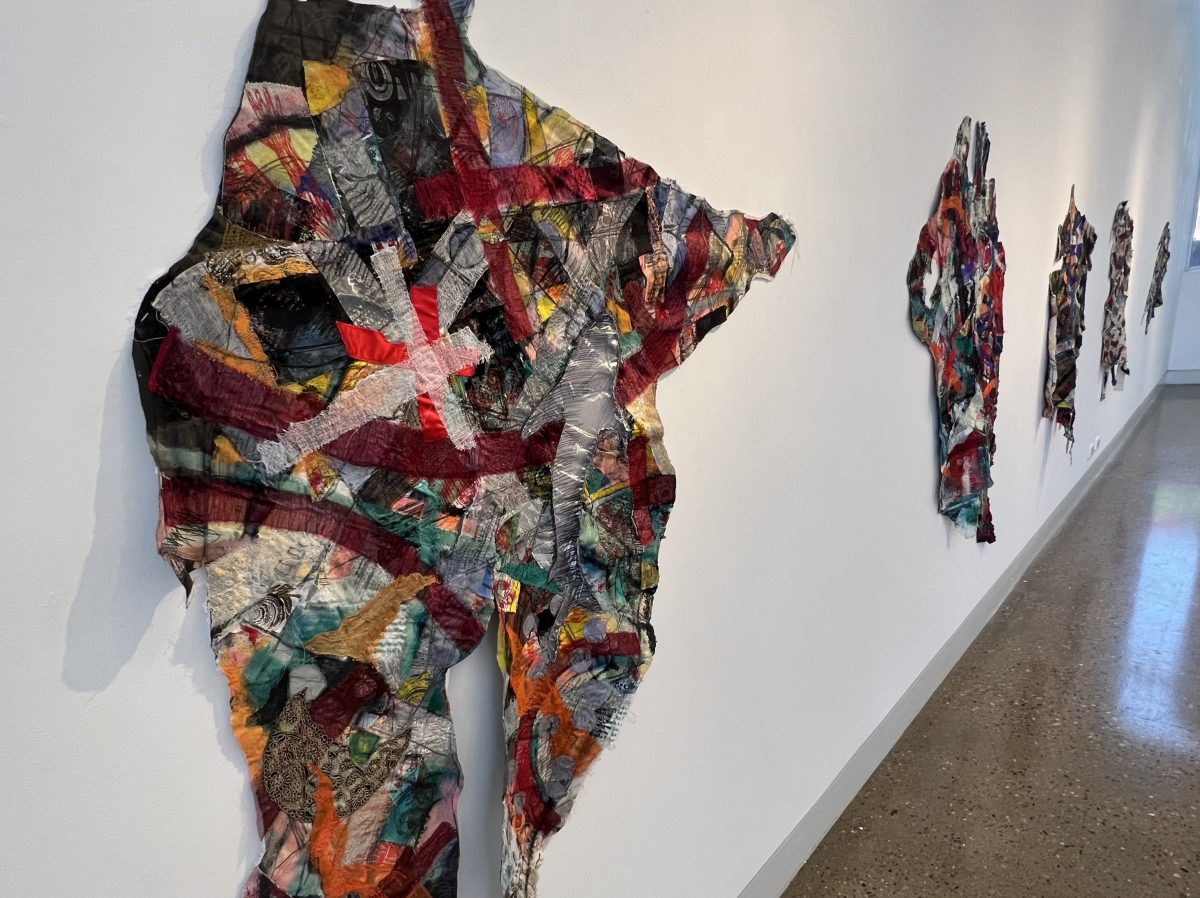
Layered textile “life jackets” that were part of an installation called Aqua Profonda by Julie Montgarrett. Photo: Chris Roe.
Wagga TAFE’s Elizabeth MacDonald said the show was a great opportunity to get a glimpse into a life spent working in the arts.
“It’s just fabulous and Julie has been inspirational as a teacher and as an artist in residence here in the past and sharing her knowledge of textiles,” she said.
“Julie has also given an artist talk to our TAFE students, telling them that there are opportunities to build careers in the arts, and that art is an adventure.
“It’s taken her around the world three times, and it shows that they too can find exciting futures in the sector, despite a belief to the contrary by some.”
The collection of works ranges from a scattering of small textile crosses on the floor, to larger fabric works and collages that capture some of the thinking and experimentation Julie used in the course of completing her PhD.
“These collages are the early stages of the research that I did which was about the early stages of settlement in Van Diemen’s Land and the first waves of the British,” she said, indicating a pair of framed works in layers of blue and brown before moving on to a line of brightly coloured hangings on the opposite wall.
“There are also these pieces that were part of a show called Aqua Profonda,” Julie explained.
“It was something that was written at the end of swimming pools back when I was a kid meaning ‘deep water’ and they are about life jackets and about community.
“And these crosses on the floor are a kind of reference to a life raft.”
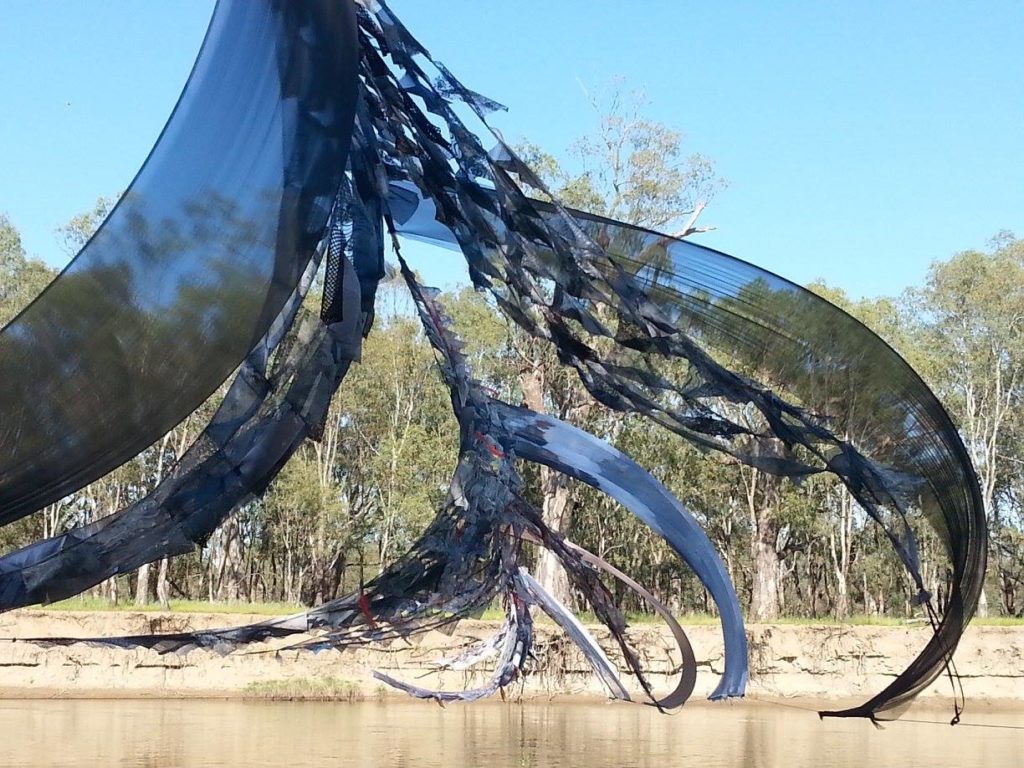
Julie Montgarrett’s work stretching across the Murrumbidgee at the On Common Ground Festival at Narrandera in 2015. Photo: Supplied.
The exhibition centrepiece is a collection of enormous translucent pennants that formed part of a project called Vanishing Point that was strung across the Murrumbidgee River at Narrandera in 2015.
“It was part of a festival called On Common Ground and we talked about putting a piece of work out over the Murrumbidgee River,” she explained.
“The director said, ‘Don’t worry, it’ll be the narrowest point of the river’, which turned out to be 100 metres!
“These were part of a 20-panel piece that went out over the river and was based on Dame Mary Gilmore’s ‘swan hoppers’.”
The story by the famous Wagga author recalls a period in the late 19th century when she claims local graziers employed young men to destroy the nests and eggs of the local black swans to make way for their herds.
“They are made from recycled lace curtains that were dyed and printed and worked on and then cut to be like swans wings,” Julie said.
“So they’re about the tensions in the landscape with the wildlife, industrial-scale agriculture and climate change.
“Everything was kept under tension and kind of pushed to breaking point.”
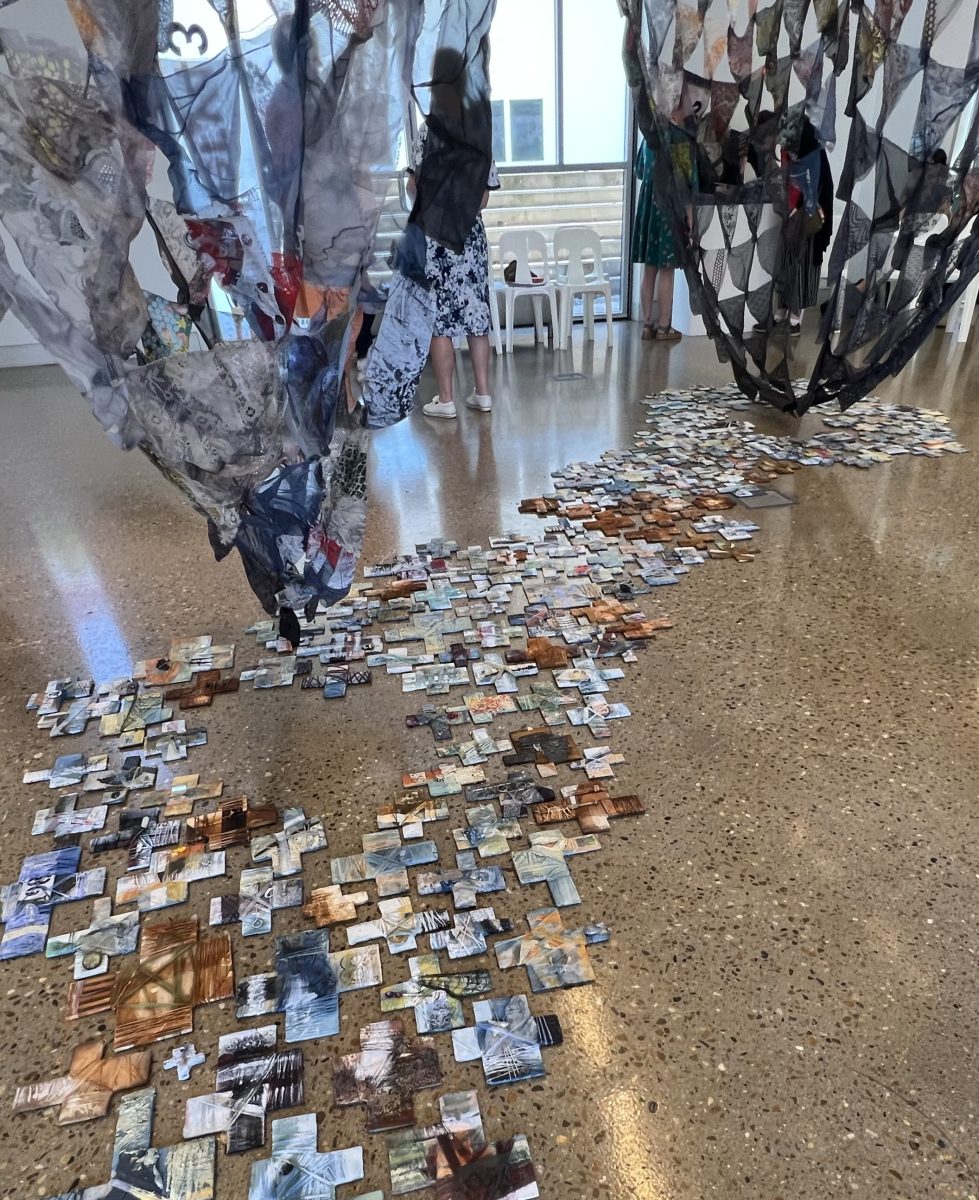
Julie Montgarrett’s work is on display now at Gallery 43. Photo: Supplied.
Julie said she loved the way her chosen medium interacted with the environment.
“Textiles are like no other medium really,” she reflected.
“There’s the drape, the fold, the layering and the whole response to gravity and light and wind and movements of air that change and work differently at different times.”
You can take a look at Julie Montgarrett’s work at Gallery 43, at the Wagga TAFE on the corner of Coleman and Macleay Streets.







